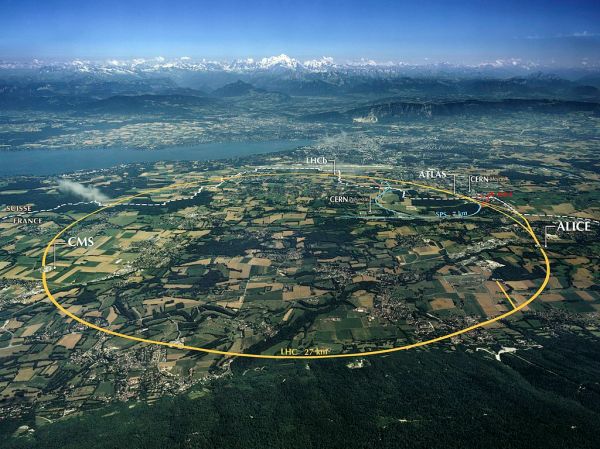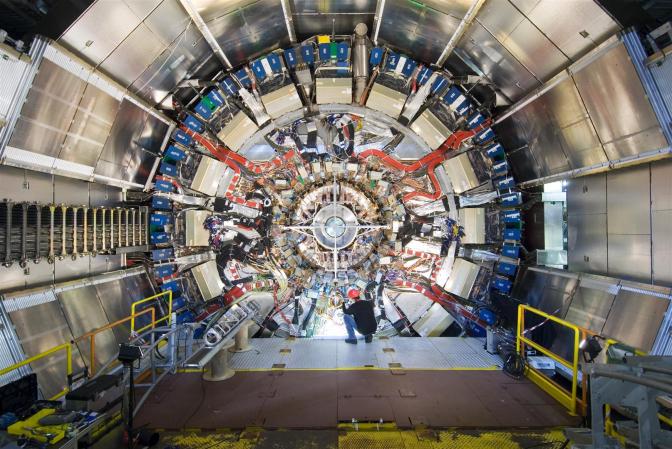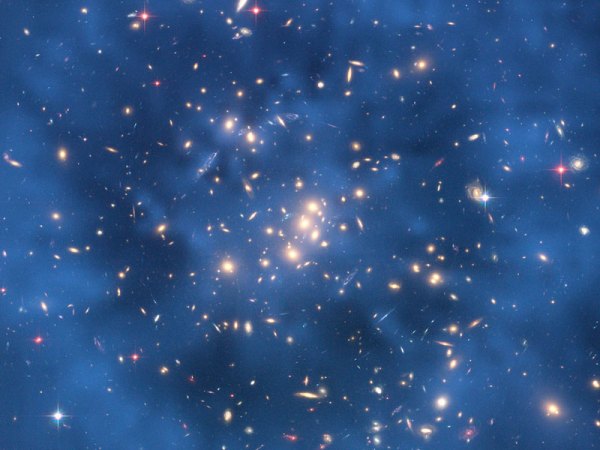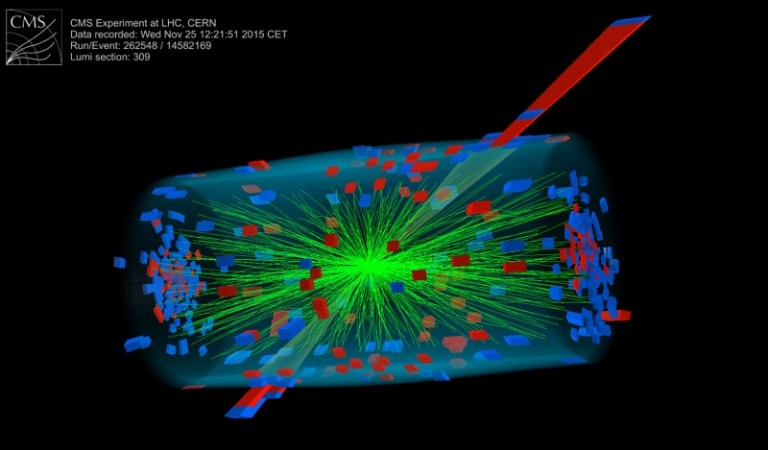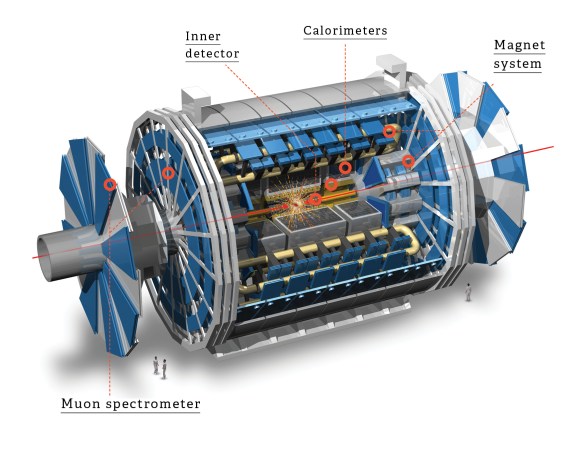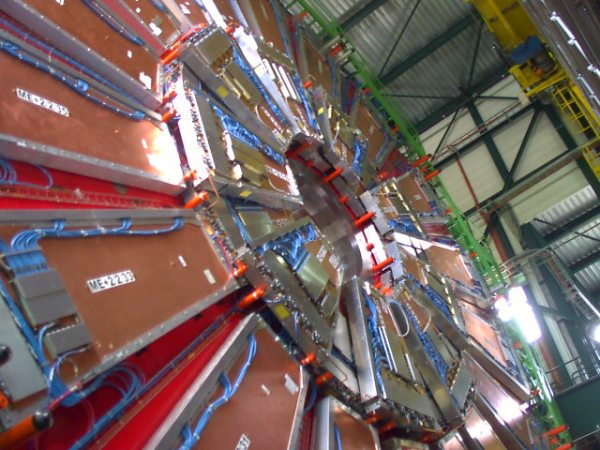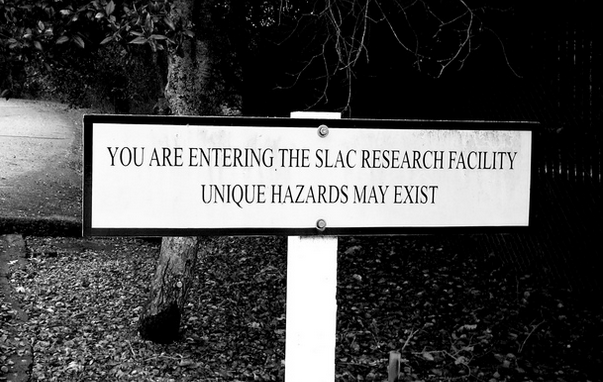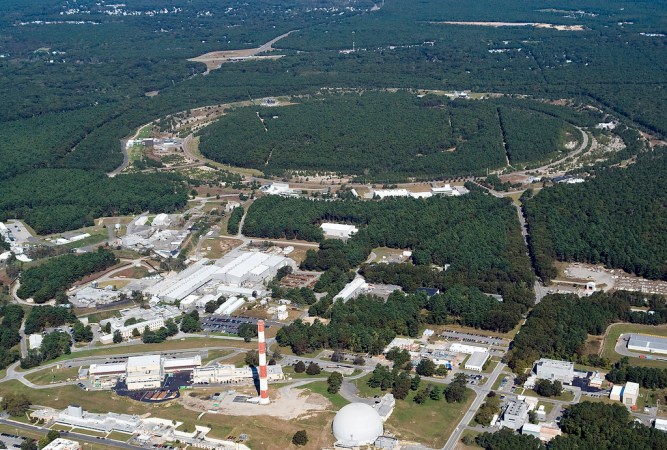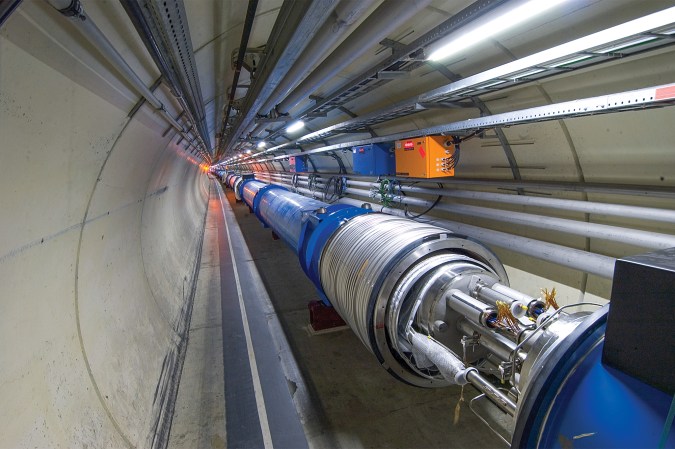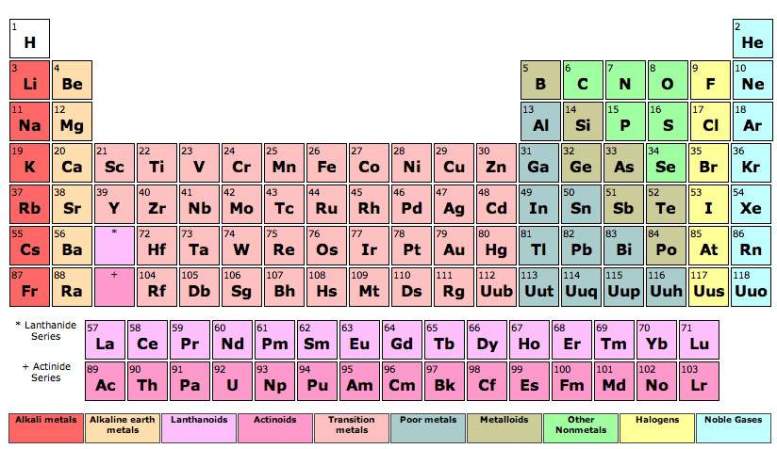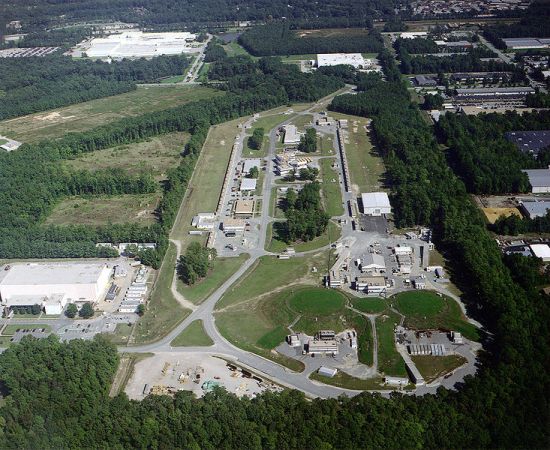

The Large Hadron Collider (LHC), the world’s most powerful particle accelerator and a pivotal tool in high-energy physics discoveries, roared back to life on April 22 after going on hiatus in December 2018.
A statement from CERN, the organization that runs and houses the 16-mile-long superconductor in Switzerland, explained that its team successfully completed a break-in run of the accelerator on Friday afternoon. The LHC will undergo several more months of tests and preparation before it can collect applicable data on ions, quarks, bosons, and other weird and wild varieties of particles again. The latest experiment consisted of “two beams of protons circulated in opposite directions … at their injection energy of 450 billion electronvolts,” according to CERN’s post.
“These beams circulated at injection energy and contained a relatively small number of protons. High-intensity, high-energy collisions are a couple of months away,” Rhodri Jones, head of CERN’s Beams department, explained in the statement. “But first beams represent the successful restart of the accelerator after all the hard work of the long shutdown.”
[Related: Inside the discovery that could change particle physics]
First launched in September of 2008, the LHC was temporarily decommissioned in December of 2018 for much-needed repairs and upgrades. This marked the second long-term shutdown in the accelerator’s history. In 2013, the LHC was turned off for two years to have its cryogenic and vacuum systems serviced and a number of its magnets replaced. The system also got a more than 60 percent energy boost, raising the reading of teraelectronvolts (TeV) on each proton beam from 8 to 13. The recent interruption wrapped in similar adjustments.

“The LHC itself has undergone an extensive consolidation programme and will now operate at an even higher energy and, thanks to major improvements in the injector complex, it will deliver significantly more data to the upgraded LHC experiments,” Mike Lamont, CERN’s director for Accelerators and Technology, said in the statement from Friday. While the full potential of the juiced-up LHC remains to be seen, the physicists behind it are aiming to hit 13.6 TeV. That’s close to a third of the energy transmitted by some of the strongest gamma rays recorded in the Milky Way.
[Related: In 5 seconds, this fusion reactor made enough energy to power a home for a day]
Once the accelerator is recharged, CERN will dive into “Run 3” of its particle physics experiments to observe new states of matter like quark-gluon plasma and continue old projects that recreate the conditions from after the Big Bang. When the LHC last left off, it was yielding more data than ever before, including on the famed Higgs Boson, the presence of antimatter (or lack thereof), and the heft of W and Z particles. In the gap since 2018, collaborators have been digging through petabytes of calculations to shed light on long-standing riddles in high-energy physics. For instance, just this January, researchers from MIT pinpointed an ephemeral particle they labeled as X(3872).
The LHC can also build on findings gleaned from other circular particle colliders in its next phase. In early April, a team of collaborators from across the US used results from the now-defunct Tevatron accelerator in Illinois to come up with the most precise weight of the W boson to date. CERN can now confirm or refute that measurement, which could make waves for the underlying Standard Model in particle physics.
All of which is to say, with the LHC back in swing, the world is about to get more curious and maybe, a little less enigmatic.

